Diogo Monteiro looks at the history of the recently destroyed Antonov An-225 Mriya aircraft.
The size of the An-225 matches the immense desire of Oleg Antonov to create aircraft and to take the Soviet aerospace industry to another level. The An-225 was the symbol of the Soviet space program along with the Space Shuttle Buran. The An-225 was the “Mriya”, the “Dream” for the Ukrainians, who were so proud to be able to claim that they had built the
biggest plane in the world with their own hands. The history of the Antonov 225, like himself, is large and complex. And to better understand the reason for its construction, it is necessary to delve a little into the history of the Soviet Union.
An-225 Background and the Buran Space Program
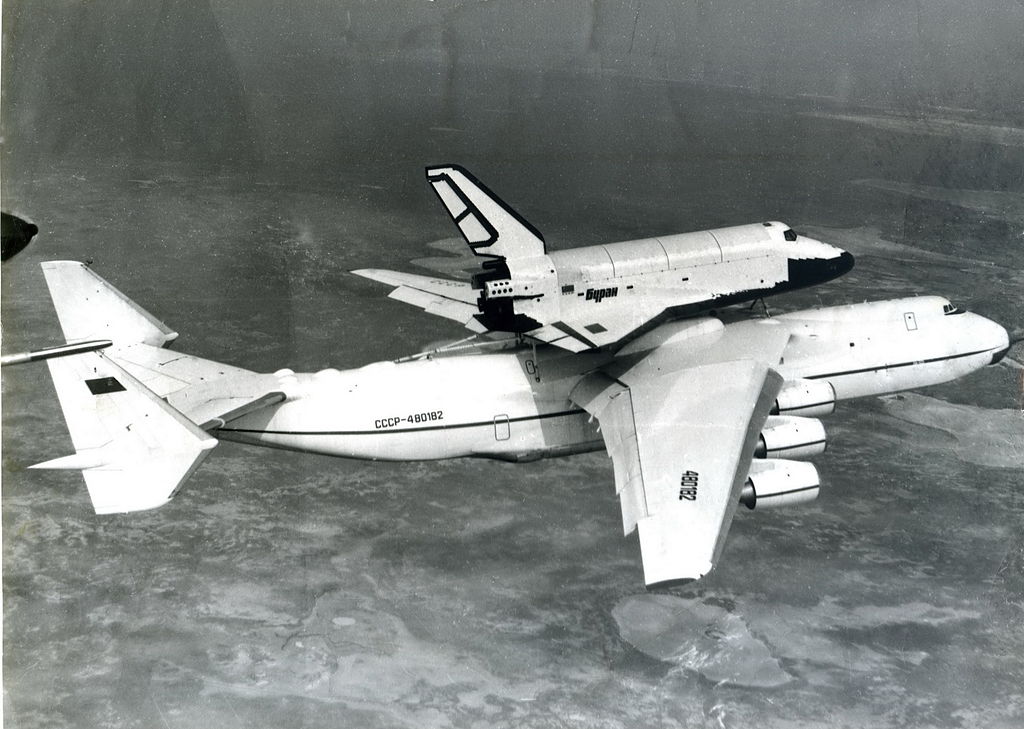
Vasiliy Koba, CC BY-SA 4.0 <https://creativecommons.org/licenses/by-sa/4.0>, via Wikimedia Commons
The mid-1970s of the 20th century were marked by being a period of many and great achievements in the field of space exploration. At the time, due to the Cold War, satellites from the United States of America and the then Soviet Union became extremely important parts of the military infrastructure and the world economy.
In this branch, manned space stations were already in Earth’s orbit, as was the case with the American Skylab and the first steps towards cooperation between the two world superpowers at the time (the USSR and the USA) were being taken. A case of this cooperation was the Apollo-Soyuz Mission, (which was a joint mission of Project Apollo and the Soviet space program that made a docking in Earth’s orbit of a spacecraft from the United States with one from the Soviet Union). At the time it looked like the rate of space exploration would increase and that meant that more and more and more cost-effective
means of launching payloads would be needed to put into Earth’s orbit to replace the very expensive disposable launch vehicles such as the Saturn V. The United States then began to dedicate its investments in the aerospace sector to the newly designated “Space Shuttles”, which consisted of a manned vehicle that could go to Earth’s orbit and return landing like a commercial aircraft. On the other side of the Iron Curtain, the Soviet Union, which did not and could not be left behind in the aerospace race, also decided to develop its own system with characteristics quite similar to the American model of the Space Shuttle.
Then, in February 1976, the Buran Space Program was created along with the program to create its propellant rocket. Later, the name of the program was changed to “Buran-Energia”. Both space vehicles impressed with their unprecedented size and weight. Some of its parts would be built by companies in the most central areas of the Soviet Union, with assembly to be carried out directly at the Baikonur Space Center in present-day Kazakhstan.
With this, it would be necessary to deliver parts of the launch rocket and the space vehicle at a distance of between 1500 and 2500 kilometers, with some of these parts having a length of 60 meters with a diameter of 8 meters. In addition to this size, depending on the task that was carried out in orbit, Buran (the Soviet Space Shuttle) could land on runways that were
located throughout the entire Soviet Union, but at the end of the mission it would have to return to Baikonur (which was its operational base where it could only receive technical intervention and preparations for future space missions.)
To transport all these parts which in themselves were a logistical nightmare, along with Buran itself, the logistics of sea, land, and rail transport were obsolete and inefficient, given the gigantic size of the Soviet Union. Deep interventions and technical modifications were needed on highways, train lines, and river lines, which would be quite expensive. There was
only one possible solution: by air.
Thus, the leadership of the Ministry of Aviation Industry of the Soviet Union asked the Antonov Bureau, the renowned Ukrainian company, to develop and design a specific aircraft to transport parts of this new space project.
In parallel, engineers from the Buran space program considered developing a space shuttle that would be reusable. Not with vertical launch, but with horizontal launch, where the first stage would be an airplane and the second a small space vehicle with a fuel tank. In this case, the aircraft would be transformed from a carrier of relatively simple parts to an authentic flying launch pad, from which the Space Shuttle Buran with a total mass of approximately 170 tons would be launched into orbit.
Antonov’s Large Aircraft Development
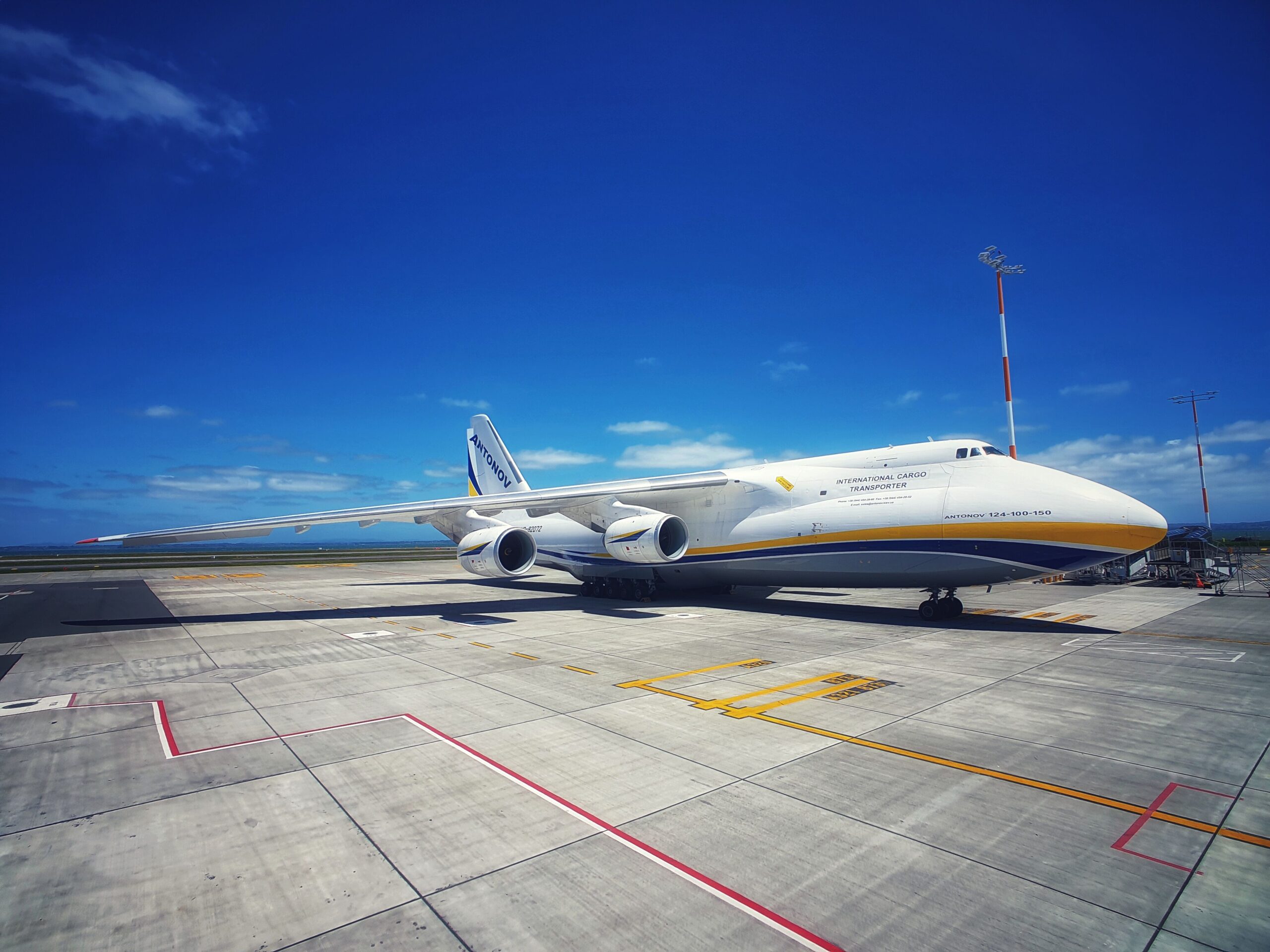
An-124. Image (c) Antonov Airlines
Antonov at the time was working on the Antonov An-124 project. The aircraft that at the time had the largest cargo capacity in the world. This future design of the An-124 could serve as a basis for the future special aircraft in the service of space shuttles, as the An-124’s payload was 170 tons. The only snag was that the An-124 was still in the design phase. It was first necessary for the prototype to be completed and then tested, a process that would take some time. Furthermore, the use of the An-124 for the air launch of a space vehicle was not entirely adequate, due to its vertical stabilizer, which would be in the direction of the space vehicle’s engines. For logical reasons, Antonov could not change this feature of the An-124, since the plane was almost finished and approved by most of the air regulators that granted its certification.
Trying to come up with a second option, Antonov designers in Kyiv tried to make some modifications to the Antonov An-22 (which is the biggest turboprop aircraft in the world), to use it as the space shuttle carrier. In the designers’ initial plan, this modification would be possible in two ways: Either by placing the cargo on top of the An-22’s fuselage or inside the tail with the fuselage being widened by 8.3 meters in length. However, both methods presented problems of stability and controllability of the aircraft, in addition to several structural problems. With this, the idea of using the An-22 as an alternative to the An-124 was discarded.
With no viable hypotheses on the table, the Soviet space project was forced to pin its hopes on the VM-T project. The Myasishchev VM-T Atlant was nothing less than a modification of the Myasishchev M-4 Molot strategic bomber, built in the mid-1950s, this design would be able to serve as a patch while the Space Shuttle Buran was being built.
The modification to the VM-T consisted mainly of reinforcing the structure of the aircraft, equipping it with external fastening and dual-tail components, which provided the ability to carry long-length loads. The VM-T carried out 150 flights to Baikonur, carrying Buran components, but at great risk. These missions to Baikonur only ended well most of the time
due to the courage and professionalism of the flight crews. Furthermore, the VM-T was not able to transport all the necessary parts. He could take the Space Shuttle Buran only without its vertical stabilizer and without its internal equipment, and it was still impossible to drop it in the air, as NASA was already doing with its Boeing 747 and Space Shuttle.
At the end of 1982, Antonov began testing the An-124 and its extraordinary transport capabilities allowed it to take components such as the Energia rocket’s central unit with hydrogen and oxygen tanks together, however, the external transport of long loads still was hampered by the position of the An-124’s tail. At that time, space engineers concluded that
a multiple transport system with horizontal rather than vertical launch would not weigh 170 tons, but would instead weigh between 220 and 270 tons. So, with these requests, the An-124 was automatically no longer the suitable plane to be the carrier of the Space Shuttle Buran. It was now necessary and critical to create a new, larger, and more capable aircraft.
Such a task would be beyond imagination, not only in a technical sense but also in the cost of building and producing the future aircraft. The designs of the future aircraft were immediately submitted for consideration by various organizations in the sphere of the Soviet State bureaucracy.
All organizations foresaw the creation of a completely new aircraft with all the economic consequences dependent from it while the Soviet national economy at the time already had significant flaws and an aerospace program of this size could not be completed. Antonov’s proposal foresaw the creation of an aircraft with maximum use of the existing components of the An-124, which was presented in the second half of 1983. On a more technical level, the wing of the future airplane would be much larger due to the longer range and carried 6 purely Ukrainian Ivchenko-Progress D-18T engines with 51,500 lbf thrust each, engines that are also used in the An-124. The fuselage was increased by 7 meters, inserting additional sections in the cross-sectional area. In the upper part of the fuselage, fasteners for external loads were installed. As the efforts on the tail were considerably increased, the rear loading ramp (present on the An-124) was removed, the nose landing gear supports were to be reinforced. The number of main undercarriages was increased to 7 on each side, with the last 4 rear wheels swiveling to facilitate maneuverability in tight turns.
Thus, the aircraft project could not only transport the Space Shuttle Buran units and the Energia rocket thrusters with the appropriate level of safety, but also serve as a first step towards the promising reusable aerospace system, in addition to being able to be used equally for for transporting different loads.
The development of this new aircraft took three and a half years. Normally, this period of creation of any aircraft is characterized by a significant reformulation of the preliminary project, mainly when it is intended to use any part of another aircraft without alterations. But both the design and the construction of the new aircraft, designated Antonov An-225, were generally quite easy, due to the vast experience of the Antonov team in the segment of aircraft intended for cargo transport.
Together with Antonov, hundreds of other Soviet factories worked hard to implement the project. The wing sections were made by Taskent, and were delivered to Kyiv aboard an Antonov An-22. Landing gears were designed in Kuibichev, elements of the hydraulic system in Kharkiv and also in Moscow, with a total of over 100 manufacturers involved.
An-225 Roll Out and First Flight
On November 30, 1988, the plane rolled out of the hangar where it was being built at Gostomel Airport for the first time, showing its imposing 84 meters in length, 88 in wingspan and 18 in height. At the time, it was the largest and heaviest aircraft ever built by humans, only surpassed in wingspan by Howard Hughes’ Spruce Goose, which was 9 meters longer.
Thousands of Antonov designers and workers gathered to see the Cossack Roll-Out (NATO code for the An-225), and for the first time saw the inscription “Mriya”, on the fuselage, which had been painted the night before the event.
Antonov’s Project Manager at the time, Petro Balabuyev, answered journalists’ questions for a long time, including questions about the name of the plane, stating that a dream is an infinity of human thoughts and desires. The dream carries us forward and will never disappear as long as a person is alive on the planet, and if a plane was born on Ukrainian soil, let it take on board a word of your language: “Мрія”. The plane was then towed and handed over to the test team, and the good technical characteristics of the An-124 had an immense positive effect on the Antonov 225’s ground tests and on-board systems. Three days later, the aircraft took its first steps independently. Tests that included taxiing on taxiways, curves and take-off run up to a speed of 200 km/h (on this occasion including the front landing gear having lifted off the ground). The behavior of the An-225 turned out to be exactly as it had been designed and its first flight was scheduled for December 20, 1988.
Due to unfavorable weather conditions the flight was canceled and postponed to the following day. Even with low ceiling and snow, the Antonov An-225 covered about 950 meters of runway and took off for the first time in the skies of Ukraine.
This first flight lasted 1 hour and 14 minutes, and determined the stability and controllability characteristics of the new aircraft. Several aerodynamic corrections were confirmed, and the operation of on-board systems and equipment was verified. This first test flight of the Antonov 225 revealed the excellent quality of the real characteristics of the plane and the coincidence of the real behavior of the aircraft in the air with what had been simulated earlier in the design phase. Everything went as planned and so flawlessly that test pilot Oleksandr Vasylyovych Halunenko later told reporters that if Antonov continued to manufacture airplanes so reliably, the services of test pilots would simply no longer be necessary. Noting this statement, the tests of the aircraft proceeded without major problems. Thus becoming a confirmation that the idea of creating the Antonov An-225 based on the Antonov An-124 (which had already passed all the necessary tests and certifications), was indeed a wise decision.
Due to the structural similarity and most of its components, systems and on-board equipment of both aircraft, the Antonov development cost was able to be drastically reduced, along with the number of test flights required. 1989 was a year of achievements for Antonov. In February of the same year, the then President of the Soviet Union, Mikhail Gorbachev, visited the Antonov 225 at Kiev Airport and the historic decision was made there to place two Antonov An-124s at the disposal of
Antonov. This event thus opened doors for commercial transport operations using the aircraft themselves. The necessary stimulus for the creation of Antonov Airlines emerged.
March 22, 1989, was marked as one of the most significant days in the entire history of the Antonov 225. It flew with the aim of breaking world records. After careful weighing of the cargo with a total weight of 156.3 tons the An-225 took off. The achievement count began immediately after take-off. Competing directly with the Boeing 747-400, which at the time had the record for a maximum take-off weight of 404 tons, the An-225 completely pulverized this record in another 104 tons of cargo. In all, the An-225 Mriya achieved 110 world records set in this flight alone, including the record of 815 km/h in cruising speed, in a closed circuit of 2000 km in length with a load of 155 tons flying also at a record altitude with this payload of 12 430 meters (40 780 feet). With all these feats completed, the An-225 began to operate for the function it had been performed for: transporting parts and components for the Soviet space project.
On May 3, 1989, the Mriya took off from the Baikonur Cosmodrome, carrying cargo on its back for the first time: the Space Shuttle Buran that weighed 60 tons. Over the next 10 days, the crew of the Antonov 225 performed several test flights that would control various parameters such as controllability, measurement of average in-flight speeds, as well as fuel
consumption. On 13 May of the same year, the An-225 made a direct flight between Baikonur and Kyiv, covering a total distance of 2,700 km in a total flight time of 4 hours and 25 minutes. The total take-off weight of this flight was 560 tons. When the Antonov 225 flew the Buran on its back to Paris as part of the 38th Edition of the Paris Airshow, it instantly became the main attraction of the event. However Paris was only the first stage of the new star of world aviation. In August 1989, the An-225 participated in the Abbotsford International Airshow, the main Canadian airshow, in September it was present in Prague. The following year, in 1990, Mriya participated in the Farnborough Airshow and two American airshows, in Oklahoma City and Seattle, where the world’s largest aircraft attracted the attention of thousands of Americans. Boeing Spokesperson in 1990, Rick Hodgson stated, “We make the biggest passenger planes in the world, but we bow to the Antonov An-225.”
First Commercial Missions
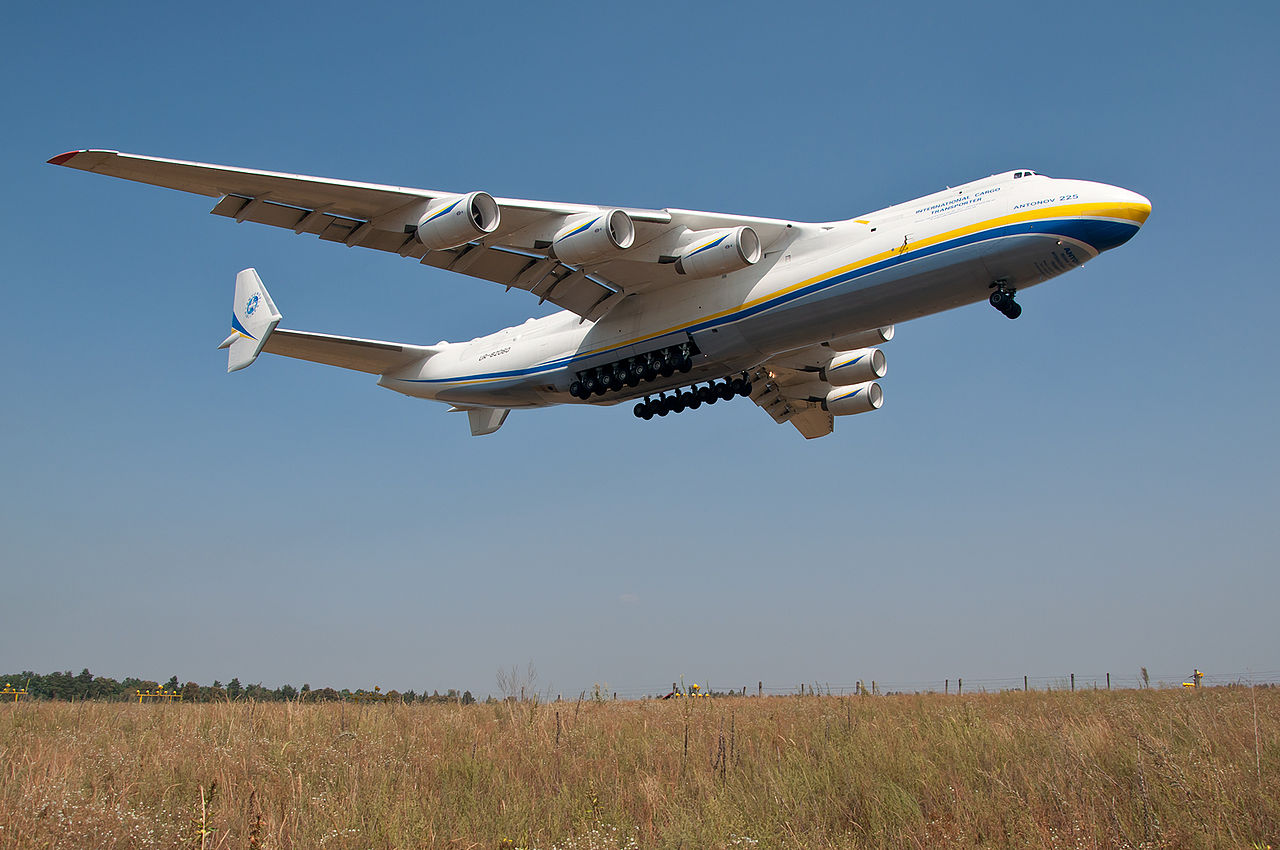
Vasiliy Koba, CC BY-SA 4.0 <https://creativecommons.org/licenses/by-sa/4.0>, via Wikimedia Commons
In 1991 the An-225 visited Shannon and in 1992 it visited Montreal, Las Vegas and also Columbus. In August 1993, MosAershow visitors had the opportunity to visit the An-225 in Zhukovsky (a city situated on the outskirts of Moscow). In December Mriya went to exhibitions in Dubai and in 1994 the Giant of Kyiv was cheered by crowds in Singapore and Sharjah. It is noteworthy that the An-225 didn’t flew empty in all these exhibitions: It was always used to transport Ukrainian exhibitions.
During this period, the aircraft performed its first commercial flights. In May 1990, the An-225 delivered a T800 tractor weighing over 110 tons from Chelyabinsk to Sakha in the far north of the Soviet Union. This Arctic expedition, in addition to being economical, was of great experimental importance, as it provided valuable material to study the An-225’s transport capabilities, while at the same time it would be possible to assess the plane’s performance in an environment with very cold temperatures.
However, the rapid worldwide fame that the Antonov An-225 gained was only one side of the coin. Just at the time when enthusiasm for the aircraft abroad was rising, the real profitability prospects of the Antonov 225 were becoming increasingly murky. For various reasons, the Buran program initially slowed down and then officially stopped in 1993 by
order of Russian President Boris Yeltsin. There were interruptions in state funding for the space shuttle tests and there was some uncertainty and instability in the Russian and Ukrainian relations.
Collapse of the Soviet Union
With the collapse of the Soviet Union, relations between Moscow and Kyiv became a mess due to the lack of relevant agreements. At the time of the fall of the USSR, the An-225 had only 113 test flights with a total duration of 253 hours (including 14 flights with Buran).
However, these flights were all carried out at airports located in different climatic areas of the Soviet Union. In total, by April 1994, including commercial transport and participation in exhibitions and airshows, the An-225 had performed 339 flights with a total duration of 671 hours.
At the same time, there was a civil certification process for the aircraft. The staff of the Ukrainian and Russian certification centers, as well as several independent experts, actively participated in this work. This process was interrupted when there were between 15 and 20 flights remaining to be completed before the end of certification. The point is that this fact was no longer relevant because the chances of using the Antonov 225 for commercial transport purposes were quite close to 0. With all this perspective, the main tasks for which Mriya was conceived disappeared with the discontinuation of the Buran Space Shuttle program and overseas work was not enough even for the relatively small number of An-124s in operation.
The Antonov 225 was placed in storage at Gostomel Airport and over time it was cannibalized with its engines, systems, and components installed in the An-124s, which with the forced sleep of the An-225, became the Antonov’s most important source of subsistence. However, the search for use for the An-225 was not limited to space exploration. There was a project to transform the aircraft into a superliner capable of accommodating 328 passengers in a very high comfort class in a range of airlines that operated flights up to a radius of 9 700 km. Antonov’s fuselage would be divided into 3 floors, designed to house suites, regular passenger cabins, a shop, a restaurant, and a casino.
If realized, the Antonov 225 would be equipped with engines and onboard equipment of western manufacture. There was also a project to use the Antonov 225 for naval rescue. Where the Mriya would carry on its back, the amphibious plane A-90 Orlyonok. Orlyonok would be launched from the An-225, float, and subsequently take victims aboard and then head to the nearest port on its own. However, after several studies and evaluations, these two proposals were abandoned. Gradually the search was reduced because it did not bring real results and the main idea was that if the Antonov 225 was destined to appear in the world for the second time, it would not be to do something exotic, but as an aircraft for commercial purposes for the exclusive transport of heavy and oversized loads that cannot be carried by other aircraft.
The impressive capabilities of the Antonov 225 could be demonstrated in 1993, when the plane took off from Volgograd bound for the Kola Peninsula, with the aim of delivering large pipes for oil distillation. Traditionally, this route was by sea, through rivers to the Arctic Ocean, and then by sea. As it was impossible to transport the tubes completely in just one navigation, two years were allocated for the transport operation of the respective ones. The use of the Antonov 225 in this operation reduced the operating period from 2 years to 2 weeks. However, this plan, apparently beneficial to both parties, was not equally implemented.
However, well-founded proposals for the use of the Antonov An-225 for the delivery of exclusive cargoes began to appear with a more desirable frequency. In 1995, when there was a clear demand in the market for transporting heavy loads greater than what the Antonov 124 could carry, the first plan to restore the Antonov 225 emerged. Undesirably, setbacks to this plan arose: during the tests of the Antonov An-70 an accident occurred, which required the mobilization of Antonov resources for the construction of a second prototype and the further development of the Antonov An-140 delayed the implementation
of the restoration plan for the Antonov An-225 for several years.
However, throughout this period, Antonov’s air transport division continued to receive inquiries about the possibility of commercial use of the Antonov An-225, receiving proposals from Siemens to transport a 196-ton electric generator, from General Electric to deliver a steam turbine of more than 200 tons and Airbus itself for the transport of structures and
components of the future Airbus A380 and A340.
Mid-Life Upgrades
In the summer of 2000, restoration work began in Kyiv. Antonov restored the An-225 with its own funds, while Motor Sich, which supplied the engines, committed to maintaining them, participating in 30% of the aircraft’s construction costs, which consequently translated into future profits that would emerge after the restoration of the aircraft.
The Antonov An-225 has been upgraded to a complete and upgraded commercial aircraft, now capable of flying around the world without restrictions. With the upgrade, Mriya now had GPWS, TCAS, new radios that met ICAO requirements, as well as the ability to fly in RVSM airspace.
Finally, in May 2001, the “second-first” take-off of the Antonov An-225 Mriya took place, and as it had happened 12 years before, this event was widely discussed on television, newspapers, world magazines and photo reports. In August 2009, Mriya was inscribed in the Guinness Book of Records, for carrying the largest single cargo in aviation history, with a total weight of 187.5 tons, in the case of a 174-ton generator that was transported together with a special structure. On that flight, the An-225 was from Frankfurt bound for Armenia.
Again in June 2010 the Antonov 225 broke another world record by carrying the longest load in the history of air transport: two wind blades 43 meters long each, from China to Denmark. In 2011, at the request of France, the An-225 delivered generators and humanitarian aid and equipment weighing 140 tons to Japan, which at the time had been affected by earthquakes and tsunamis.
Due to the SARS-CoV-2 pandemic in the world, the Antonov 225 was widely used to transport medical supplies to the most diverse countries in the world. On April 19, 2020, the aircraft performed a flight between China and France, making a stopover in Almaty (Kazakhstan). In this operation, the largest plane in the world took 150 tons of medical products to France to help fight COVID-19. As the cargo consisted of several boxes, this was the record in volume transported through an airplane, with more than 1000 cubic meters. Considering all the “spaces”, the interior of this plane could take up to 1200 m³. In a few days of activity, during the beginning of the pandemic, the Antonov An-225 managed to exceed 1500 tons transported on several flights.
The Other An-225
Although the Antonov 225 was a unique aircraft, it was never intended to be. There is a second fuselage that is 60% complete stored in an Antonov complex in Ukraine since the end of the investment, due to the collapse of the Soviet Union. All essential components of the plane’s primary structure were manufactured, including the fuselage, wings, nose, and tail.
Antonov hoped to finish this second plane and ensured that the unfinished plane was taken care of throughout this time. Rumors arose that the second prototype would be finished and put into commercial operation. In 2016, it was said that China would be investing in Antonov to finish the plane. But the conflict between Russia and Ukraine complicated the situation and the matter was put on standby, not having heard more about it since that time. In 2021, there were even
more reports that Antonov was looking for more investors to allow this second prototype to be finalized. The company stated that it was having active talks with various investors and countries regarding the development of the Ukrainian aircraft fleet and also specifically mentioned the second prototype of the An-225. Antonov said that the gigantic engineering puzzle that is the engineering of the Antonov 225 could be solved quickly if there was enough funding, estimated at between 250 to 350 million dollars.
An-225 Final Flight and the Battle of Hostomel
On 5 February 2022, the Antonov 225 took off for the last time from Billund (Denmark), bound for Hostomel Airport on the outskirts of Kyiv, where it landed at 17:30 EET. The ADB320F flight took 2 hours and 5 minutes, covering a distance of 814 nm. After this flight, the An-225 would undergo a technical intervention that would make it impossible to fly, due to
maintenance work.
On February 24, 2022, Russia launched a full-scale military invasion in Ukraine, severely damaging various Ukrainian infrastructure. On the same day, clashes broke out at Hostomel Airport, later called the “Battle of Antonov Airport”. This battle between Russian and Ukrainian soldiers, which would only end the day after, the 25th of February, resulted in the
Russian victory and the complete destruction of the airport due to the artillery. Soon the first drone images of the hangar where the severely damaged Antonov 225 was parked began to appear. On February 27, on its official Twitter account, the Ukrainian Government confirmed that the Antonov An-225 was destroyed by Russian troops during the battle at
the airport.
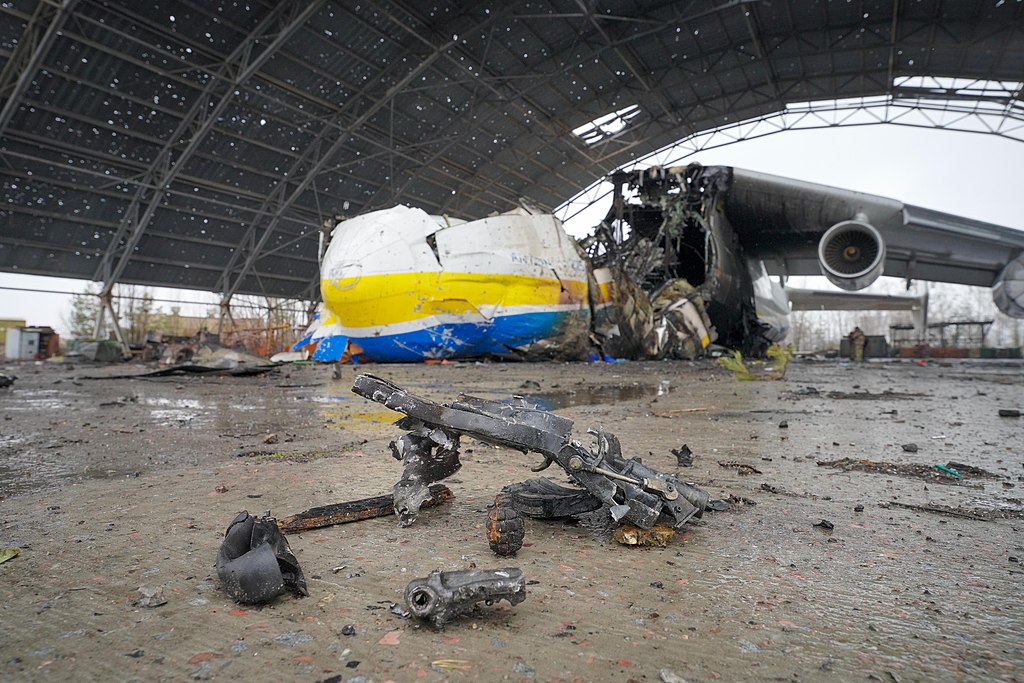
Oleksandr Ratushniak, CC BY-SA 4.0 <https://creativecommons.org/licenses/by-sa/4.0>, via Wikimedia Commons
On 2 April, Ukrainian troops regained control of the airport, where the high degree of destruction left by the conflict was confirmed. With the liberation of the airport, Dmytro Antonov, chief pilot of Antonov, published a video on his Youtube account where he reports and shows the destruction left by the Russian army at the Ukrainian airport. With this video
it is finally possible to fully see the state of destruction in which Mriya was left. Along with him, an An-124-100M-150 (UR-82008), as well as several planes that were in the Antonov complex at the airport. With the destruction of the only example in history, its future or its reconstruction remains open, based on the second unfinished prototype, however, the Ukrainian Government left the promise to rebuild the plane.
The Antonov An-225 was written down in the history books for having fulfilled the dreams of some and for having made many others dream… Dream… That was the name that the Ukrainians gave the An-225.


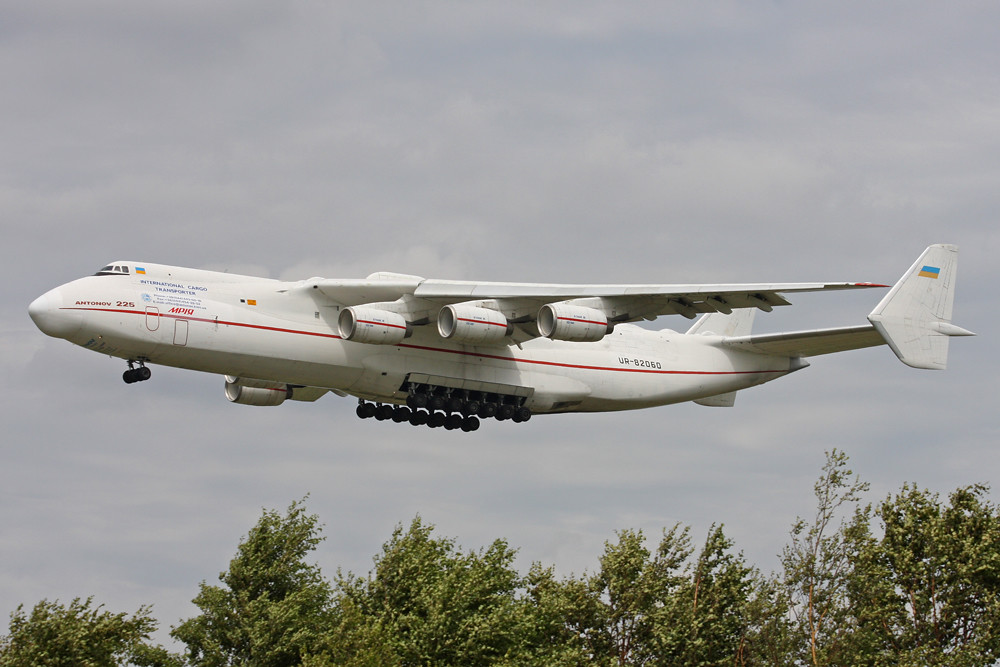

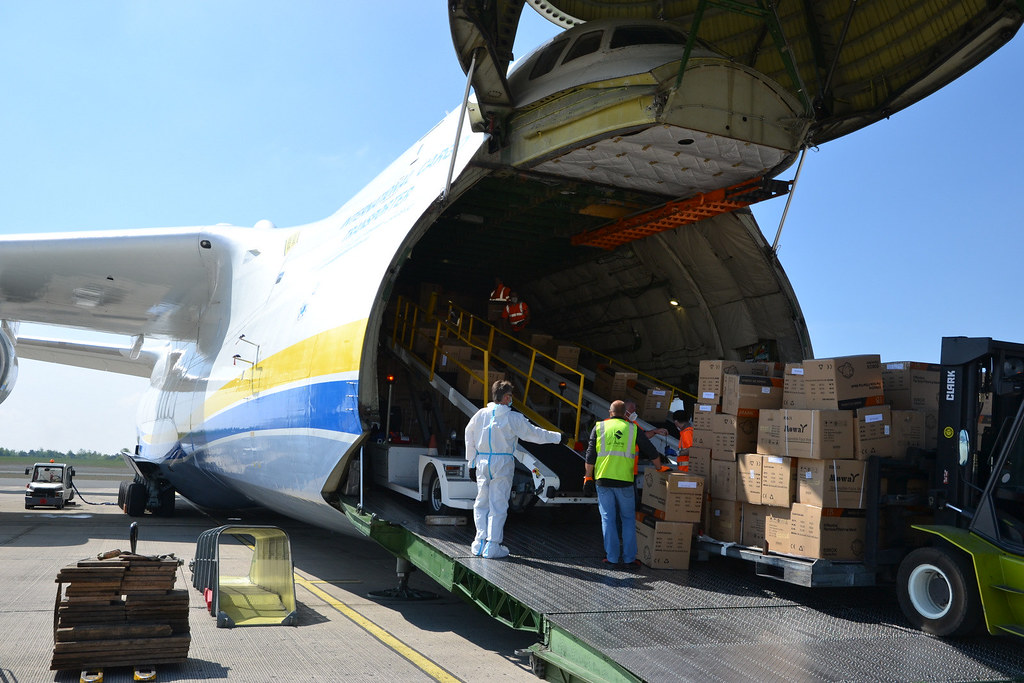



1 comment
Did it ever come to Uganda